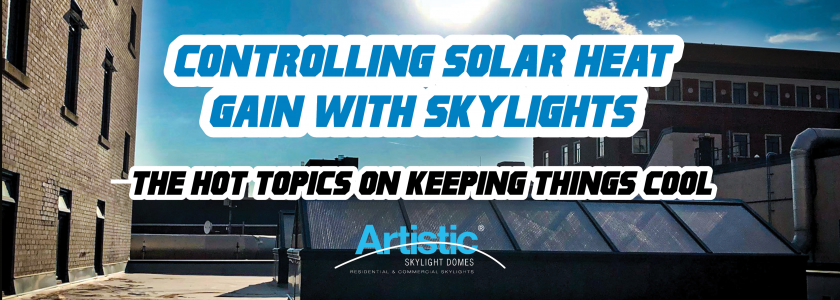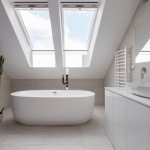
With hot summer weather on approach, property managers/owners face the challenge of maintaining occupant comfort. And while many strategies exist for reducing interior temperatures, minimizing heat gain through skylight designs and techniques is a sure bet for keeping things cool.
“There are several ways skylights can be built and used to reduce the solar heat gain coefficient (SHGC) in an environment, which is the amount of solar radiation a window lets in,” explains says Marco Ferrazzo, Manager with Artistic Skylights. “It all comes down to where you place a skylight, the materials you use, and the quality of the installation.”
Looking to turn down the heat? Consider the following ways a skylight can reduce SHGC:
- Material choice: Skylight materials play an essential role in combating SHGC. Different types of glass, for example, can be used to decrease solar heat gain through fenestration. Also, reflective glass all but stops solar heat gain in its tracks while protecting occupants from solar UV rays and easing the strain on air conditioning systems. Incorporating laminated glass into the skylight is another strategy as it also reduces of SHGC and provides 99.9% UV protection.
- Glazing: Tinted glazing on glass or acrylic skylights, are useful in combating glare, while triple-glazed glass can also boost thermal performance and reduce SHGC without obstructing the view. Moreover, there is the option to incorporate laminated glass, which adds an additional reduction of SHGC as well as 99.9% UV protection.
- Location: Skylight placement is an important factor when it comes to mitigating heat. Facing them towards a south-west position, for example, will increase exposure to the sun. To that end, an experienced skylight manufacturer will know where skylights can be placed to achieve maximum lighting impact while mitigating SHGC. It’s a delicate balance, but worth the extra consideration.
- Ventilation: Ventilating skylights are those which can be opened a small amount to transfer fresh air into a space. In addition to providing occupants with a continuous breath of fresh air, these models increase circulation and keep hot, stale air from accumulating in one place.
- Skylight blinds: As the name suggests, skylight blinds can be used to provide “cover” from solar rays. Consult a skylight specialist before installing one, as they can also add strain to a skylight unit.
- Top-rated products: Energy Star-rated skylights are recognized as the most energy-efficient options in the industry. Selecting products that are rated as such is a sure-fire way to guarantee quality.
“There’s a reason we’re one of the few skylight manufacturers to carry Energy Star products,” says Ferrazzo. “It ensures we’re installing a high-quality product that has been proven to control heat gain and manage indoor temperatures.”
When going gets hot, comfort levels drop. Fortunately, skylights can be used to not only brighten up a space but control the heat.
Learn how skylights can reduce SHGC in your home, office, or industrial property by visiting Artistic Skylights.



